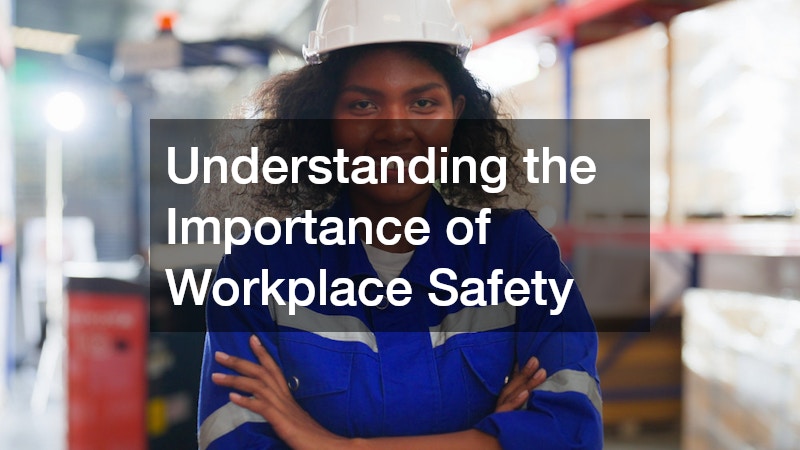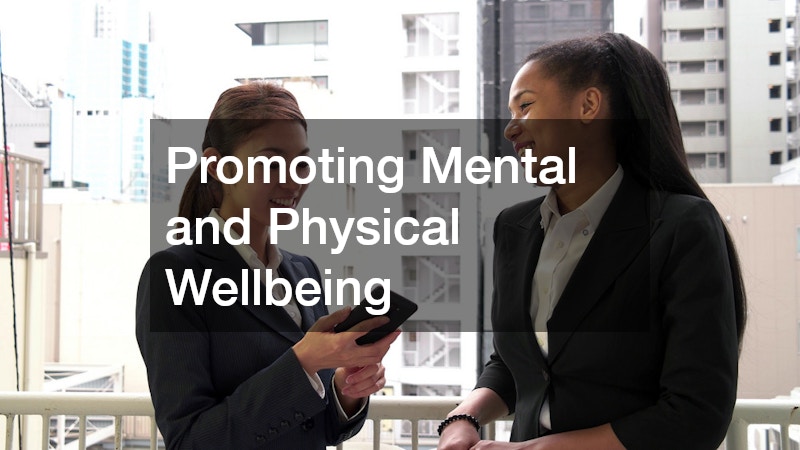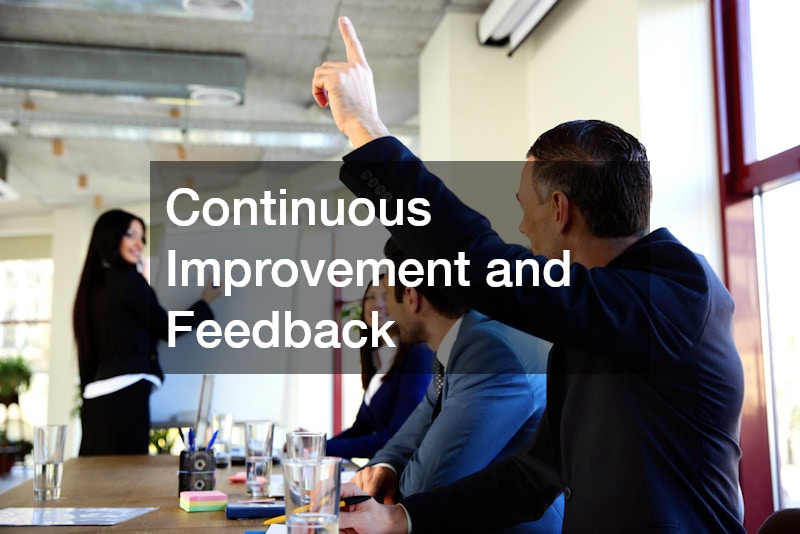
Creating a safe and secure workplace isn’t just about policies and compliance—it’s about leadership that actively fosters a culture where employees feel protected and valued. Safety at work influences everything from productivity to employee satisfaction. When leaders prioritise safety, they set the tone for the entire organisation, encouraging staff to remain vigilant and engaged.
A culture of safety requires more than signage or checklists; it demands ongoing commitment, visible action, and clear communication. Leaders must model safe behaviours, ensure resources are available, and respond quickly to potential hazards. Safety becomes embedded into daily routines when employees see that leadership genuinely cares about their well-being.
Communication is a cornerstone of any safety culture. Regular updates, training sessions, and open channels for reporting risks empower employees to take ownership of safety. When team members know their concerns are heard and addressed, trust grows, and engagement rises. Leaders also need to recognise achievements and adherence to safety practices, reinforcing the behaviours they want to see.
Ultimately, building a culture of safety is about creating an environment where every employee feels they can go home safely at the end of the day. This holistic approach covers physical safety, mental well-being, and operational security, forming the foundation for a resilient, high-performing organisation.
Understanding the Importance of Workplace Safety

Workplace safety isn’t just a regulatory requirement—it’s a strategic advantage. Employees who feel secure are more productive, more engaged, and less likely to experience stress-related absenteeism. Leaders who actively manage safety foster loyalty, trust, and a sense of shared responsibility.
Part of understanding safety involves recognising all potential hazards. This includes both obvious risks, like machinery or slip hazards, and less visible threats, such as security gaps or faulty systems. For example, using an intrinsically safe portable device can prevent accidents in environments with flammable materials or electrical hazards. Equipping teams with the right tools demonstrates proactive leadership and reduces the likelihood of injuries.
Safety awareness also requires regular training. Employees should know how to respond to emergencies, report concerns, and use safety equipment correctly. Leadership plays a critical role in maintaining accountability for these practices. By conducting routine assessments and encouraging open dialogue, leaders can identify weak points before they result in incidents.
Finally, cultivating safety requires integrating it into organisational culture. Leaders can celebrate safety milestones, offer incentives for adherence, and visibly demonstrate the importance of safe practices. A workforce that sees safety as a core value is far more likely to act responsibly, support peers, and contribute to a secure working environment.
Establishing Clear Policies and Procedures
Clear policies and procedures are essential for creating a structured approach to workplace safety. Leaders should make sure that every employee understands what is expected of them and has easy access to the resources needed to comply with regulations. Well-documented processes help reduce confusion, prevent mistakes, and reinforce a culture of accountability. When staff clearly understand their responsibilities, they are more likely to follow procedures consistently, which strengthens the organisation’s overall safety performance. Additionally, having clear policies in place helps managers identify areas that need improvement and ensures everyone is aligned with the organisation’s safety goals.
Part of effective policy implementation includes regular reviews and updates. For example, scheduling fire alarm inspections ensures that systems are functioning correctly and can alert employees to potential hazards before they become serious. Leaders who prioritise preventative measures show a visible commitment to safety, which encourages employees to adopt similar proactive behaviours. Regularly reviewing and updating policies also allows organisations to respond to new regulations, emerging risks, or changes in operational practices. By keeping procedures current, leaders can maintain a culture of vigilance and continuous improvement, demonstrating that safety is not a one-time initiative but an ongoing priority.
Another key element of safety policies is accessibility. Employees need to know exactly where safety documentation is stored, how to report hazards, and whom to contact in case of emergencies. When information is easy to locate and understand, staff are more likely to comply with safety requirements and act promptly when risks arise. Leaders can further enhance compliance by integrating procedures into onboarding programs and ongoing training sessions. This ensures that employees at all levels, whether new hires or long-term staff, operate consistently and are aware of their role in maintaining a safe work environment.
Finally, policies should be practical and actionable. Leaders can support employees by providing access to commercial electrical service. Reliable electrical systems are essential for keeping operations running safely and preventing accidents caused by faulty wiring or equipment.
Organizations should ensure they have dependable plumbing services. Proper maintenance of water and sanitation systems helps prevent hazards, keeps the workplace hygienic, and avoids disruptions that could affect employee safety.
By addressing these key services, leaders show that safety is reinforced through multiple, distinct measures rather than relying on a single solution. When safety procedures are clear and backed by accessible resources, employees feel more confident in their ability to work safely. This approach reduces mistakes, prevents operational interruptions, and demonstrates that leadership is genuinely committed to employee wellbeing and overall organisational reliability.
Training and Education

Education is a cornerstone of a strong safety culture. Leaders who invest in training demonstrate that employee well-being is a top priority. Safety training should be comprehensive, covering both routine operations and emergency response protocols. This empowers employees to recognise risks, respond appropriately, and contribute to a safer work environment.
Hands-on experience is often more effective than theoretical instruction. For example, ensuring teams are familiar with emergency commercial garage door opener repair procedures can reduce panic and accidents during urgent situations. Mentorship plays a vital role as well. Experienced employees can model safe behaviour, offer guidance, and provide feedback to newer staff.
Leaders who facilitate peer-to-peer learning strengthen safety culture organically, creating an environment where employees support each other and prioritise wellbeing. Demonstrating proper maintenance practices, like those performed by a lot sweeping company, helps employees understand how daily actions impact overall safety.
Leaders should also encourage continuous learning. Safety is not a one-time topic but an evolving practice. Hosting refresher courses, sharing updates on new technologies, and discussing case studies of past incidents can reinforce knowledge and highlight the importance of vigilance.
Leadership by Example
A culture of safety is shaped largely by leadership behaviour. Employees take cues from their managers and are more likely to follow safe practices when they see leaders modelling them consistently. Leadership by example includes following procedures, wearing protective gear, and addressing hazards promptly.
Investing in infrastructure and resources is part of leading by example. Installing a commercial entry system enhances security and sets a standard for vigilance. Leaders should also prioritise transparency. Communicating openly about risks, incidents, and corrective actions demonstrates accountability and builds trust. When employees witness leadership actively addressing safety concerns, they are more likely to take initiative themselves, reporting hazards and contributing to a safer workplace. Utilizing reliable resources like security camera services also reinforces a proactive approach to safety, helping employees feel protected in their daily activities.
Recognition is another powerful tool. Praising employees for following safety protocols or suggesting improvements reinforces positive behaviour. A leader who actively participates in safety initiatives and celebrates staff contributions strengthens engagement and ensures safety becomes a shared value rather than a mandated requirement.
Promoting Mental and Physical Wellbeing

Safety isn’t just physical—it’s also psychological. Leaders should remain attentive to employee stress, fatigue, and overall well-being, recognising that mental health directly impacts workplace safety and productivity. A supportive environment encourages staff to voice concerns without fear, seek help when needed, and maintain focus on safe practices, creating a culture where employees feel valued and protected on all levels.
Integrating ergonomics, mental health resources, and wellness programs can prevent injuries, reduce burnout, and improve overall employee performance. Making environmental changes like window tinting can improve visibility during bright conditions and reduce heat or glare. In addition, window treatments can offer a degree of protection against external hazards and unwanted attention. Leaders who pay attention to these details create an environment where employees feel secure and supported.
Leaders can model self-care behaviours by taking regular breaks, using appropriate tools such as intrinsically safe portable devices, and encouraging a balanced workload. Demonstrating these practices helps employees understand that safety extends beyond compliance—it is a daily commitment to personal and collective wellbeing. Regular check-ins and open conversations provide opportunities for employees to share challenges, highlight potential risks, and suggest improvements. Leaders who listen actively not only gather valuable insights but also reinforce a culture where mental and physical wellbeing are prioritised. This approach strengthens trust, builds engagement, and ensures staff feel secure in their roles.
Recognition and encouragement are equally important in promoting a psychologically safe workplace. Simple acknowledgements for safe behaviour, participation in wellness initiatives, or proactive suggestions help employees feel appreciated and reinforce positive practices. Leadership that consistently prioritises both physical and mental safety fosters loyalty, boosts engagement, and cultivates resilience across the organisation, creating a workplace where employees are empowered, motivated, and ready to perform at their best.
Emergency Preparedness
Preparedness for emergencies is essential in a workplace safety culture. Leaders must ensure employees know how to respond to various scenarios, from fires to power outages. Careful planning, clear communication, and regular drills reduce panic and mitigate risks during unexpected events. When employees are confident in emergency procedures, they are more likely to act quickly and effectively, keeping themselves and others safe.
Routine maintenance and inspections are critical components of emergency preparedness. Scheduling commercial door repairs helps prevent access issues during urgent situations, ensuring employees can evacuate or move safely as needed. Well-maintained doors also reduce the risk of injury caused by malfunctioning hardware and demonstrate that leadership takes preventive measures seriously.
Effective communication plans are vital in emergencies. Employees should know evacuation routes, emergency contacts, and how to access essential resources quickly. Leaders can enhance preparedness by conducting regular drills and providing hands-on training. This approach reinforces employee confidence, ensures that safety procedures are followed consistently, and strengthens a culture of readiness.
Additionally, leaders should establish partnerships with trusted local service providers to maintain safe operations. Access to reliable plumbing services ensures that water systems remain functional and sanitary during emergencies. Separately, dependable commercial electrical service keeps critical systems running safely, preventing outages that could jeopardise safety. A comprehensive emergency preparedness plan that integrates these elements reflects leadership’s commitment to safety and builds trust across the workforce. Employees are more likely to stay vigilant, follow procedures, and contribute to a safe environment when they see that leaders actively invest in prevention, response, and operational support.
Continuous Improvement and Feedback

A culture of safety is never static. Leaders must embrace continuous improvement, regularly reviewing practices, gathering feedback, and implementing changes. This ensures the workplace remains safe as operations evolve and new challenges emerge.
Soliciting input from employees is crucial. Staff often have insights into risks or inefficiencies that leadership might overlook. Encouraging suggestions for improvement, whether it’s more effective fire alarm inspections or enhanced security camera services, fosters engagement and collective responsibility.
Data and metrics also support improvement. Tracking incidents, near-misses, and equipment maintenance schedules, such as emergency commercial garage door opener repair logs, helps leaders identify trends and implement proactive measures. This analytical approach ensures safety initiatives are targeted, effective, and measurable.
Finally, recognising and rewarding contributions to safety reinforces a culture of vigilance. Leaders who celebrate successes, act on feedback, and continually refine processes create an environment where employees understand that safety is a shared, evolving responsibility.
Building a culture of safety at work is an ongoing process that requires commitment, visibility, and leadership by example. From clear policies and thorough training to emergency preparedness and wellbeing initiatives, leaders set the standard for how employees perceive and practice safety.
By investing in tools like intrinsically safe portable devices, arranging commercial electrical service or plumbing services, and utilising external experts such as lot sweeping company or security camera services, leaders reinforce the importance of proactive safety measures. Regular maintenance, inspections, and rapid response to hazards demonstrate accountability and build trust.
Ultimately, employees thrive in workplaces where they feel secure, valued, and supported. Leadership that prioritises safety fosters not just compliance, but a culture of shared responsibility, engagement, and resilience—benefiting both staff and organisational performance. A safe workplace isn’t just a goal; it’s a reflection of strong, conscientious leadership.



